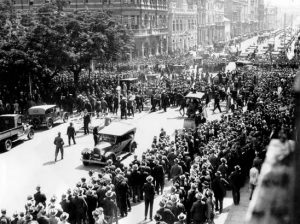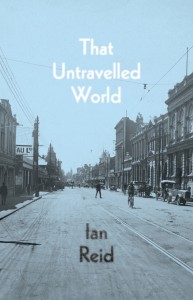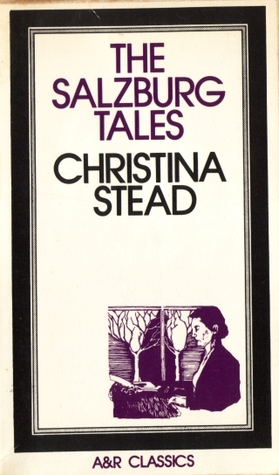Lately we’ve often heard that the economic and social dislocation caused by COVID19 has been more disastrous than anything since the Great Depression. It’s sometimes implied that what we’re now experiencing is basically similar to that 1930s global trauma. Not so! In some ways our present plight may seem worse, but for the most part it’s much less serious.
True, the situation we face is shockingly different from the one faced by an earlier generation in that ours is a double whammy, not only disrupting the financial system (therefore jobs etc.) but also bringing sudden sickness and death to many around the world. The health of the international economy and the health of vast numbers of people are simultaneously threatened. For us, it’s almost as if the Great Depression had coincided with the 1918-20 Spanish Flu. In that respect, 2020 is an extraordinarily frightening time. (In contrast, the Depression period actually saw an improvement in average population health: despite widespread malnutrition and an increase in suicide, the death rate was lower than in the prosperous years before and afterwards. An irony worth pondering!)
Yet the serious physical impact of the coronavirus has been far less extensive than that of the Spanish Flu, which killed c. 50 million worldwide and c. 13,000 in Australia, whereas figures for COVID-19 show c. 130,000 deaths worldwide so far, and fewer than 70 in Australia.

Perth, 1931: unemployed men march in protest to the Premier’s office (public domain image). Chap. 10 of That Untravelled World is based on this incident.
So too, the socio-economic impact of the Great Depression went far beyond anything that confronts us now.
Alarming though it is to envisage unemployment in Australia rising (as we’re told it soon will) to 10%, this prospect is still relatively mild. Depression-era unemployment at its peak officially reached 32% — a figure mainly confined to ‘male breadwinners’: the real number desperate for work was higher! Many of the men remained out of work until the end of the decade, when they were able to enlist as soldiers.
To the ‘30s crisis neither Commonwealth nor State governments made any response comparable in speed or scope to what Australia has seen in recent weeks — the Jobseeker payments and other alleviating measures. Back then, support for the unemployed was limited to patchy relief schemes, generally known as the dole or sustenance (‘susso’), which were not available to all. Evictions were common, many families had to live rough on public land, and welfare safety-net provisions of the kind we take for granted did not exist.
Much of what we currently regard as hardship would have seemed the height of luxury to that earlier generation. Although people weren’t constrained by ‘social distancing’ or required to stay at home during the Great Depression, they had very few of the resources we can utilise to pass the time pleasantly. Most households in those days had no access to radio or telephone, let alone TV, internet, email, social media… Much less food was available. Health care was rudimentary.
Statistics and other factual information can hardly convey more than a superficial impression of what it felt like to struggle through the 1930s. The deepest insights come from novels and short stories that help us to imagine being among those whose lives were wrecked by economic and social devastation. A long time ago, in my book Fiction and the Great Depression in Australia and New Zealand, I wrote about the dozens of stories published in the 30s and soon afterwards that recorded and interpreted the traumatic experiences of this decade. There’s a substantial body of Australian work; and while it doesn’t all have lasting value, much of it still deserves attention, especially certain novels by Christina Stead, Kylie Tennant, Leonard Mann and Alan Marshall, and short fiction by Peter Cowan, Dal Stivens and John Morrison. The influence of the Depression on New Zealand literature was also profound.
 In our own time, several writers of historical fiction have gone back to that period — and I’m one of them. My novel That Untravelled World is set in Western Australia in the years 1912-39, much of it focusing on the Depression years.
In our own time, several writers of historical fiction have gone back to that period — and I’m one of them. My novel That Untravelled World is set in Western Australia in the years 1912-39, much of it focusing on the Depression years.
Part of my aim in this book was to suggest how the main character’s vicissitudes reflect a larger national story about the painful transformation that our country endured in that formative period. Young Harry is initially caught up in the exhilarating prospect that technological innovation, especially wireless, will conquer distance and bring progress and prosperity to the young nation. His attitude changes as Australia moves from heady optimism into the hard times of WW1 and the Depression, becoming a sadder and wiser community. In the words of one reviewer,
Harry drifts between places and jobs, never really finding his niche. His tale of early confidence followed by recurrent disappointment is evocative of the period in which it is set…. With its rapid technological change and economic ups and downs, it’s a period that resonates with our own.


